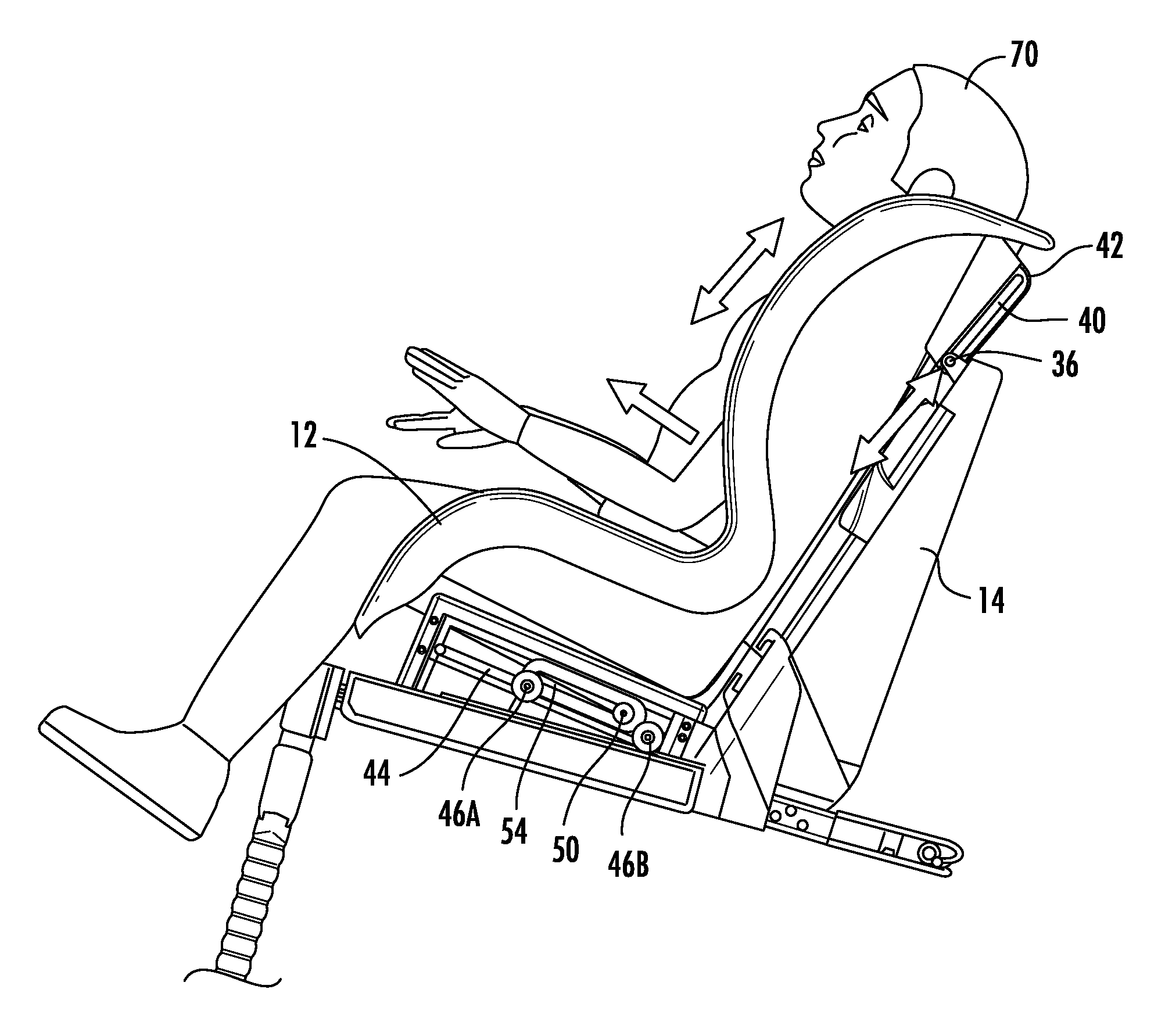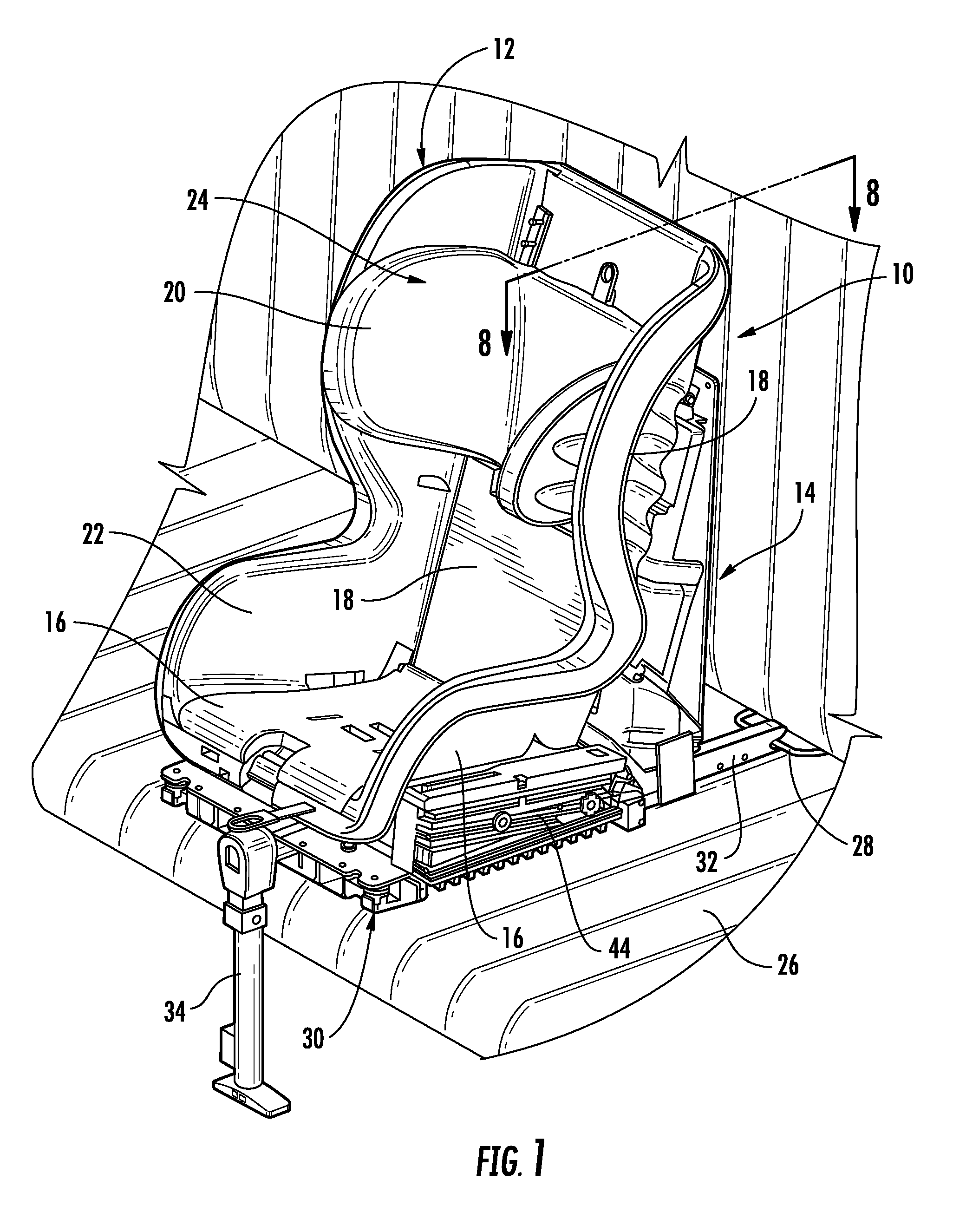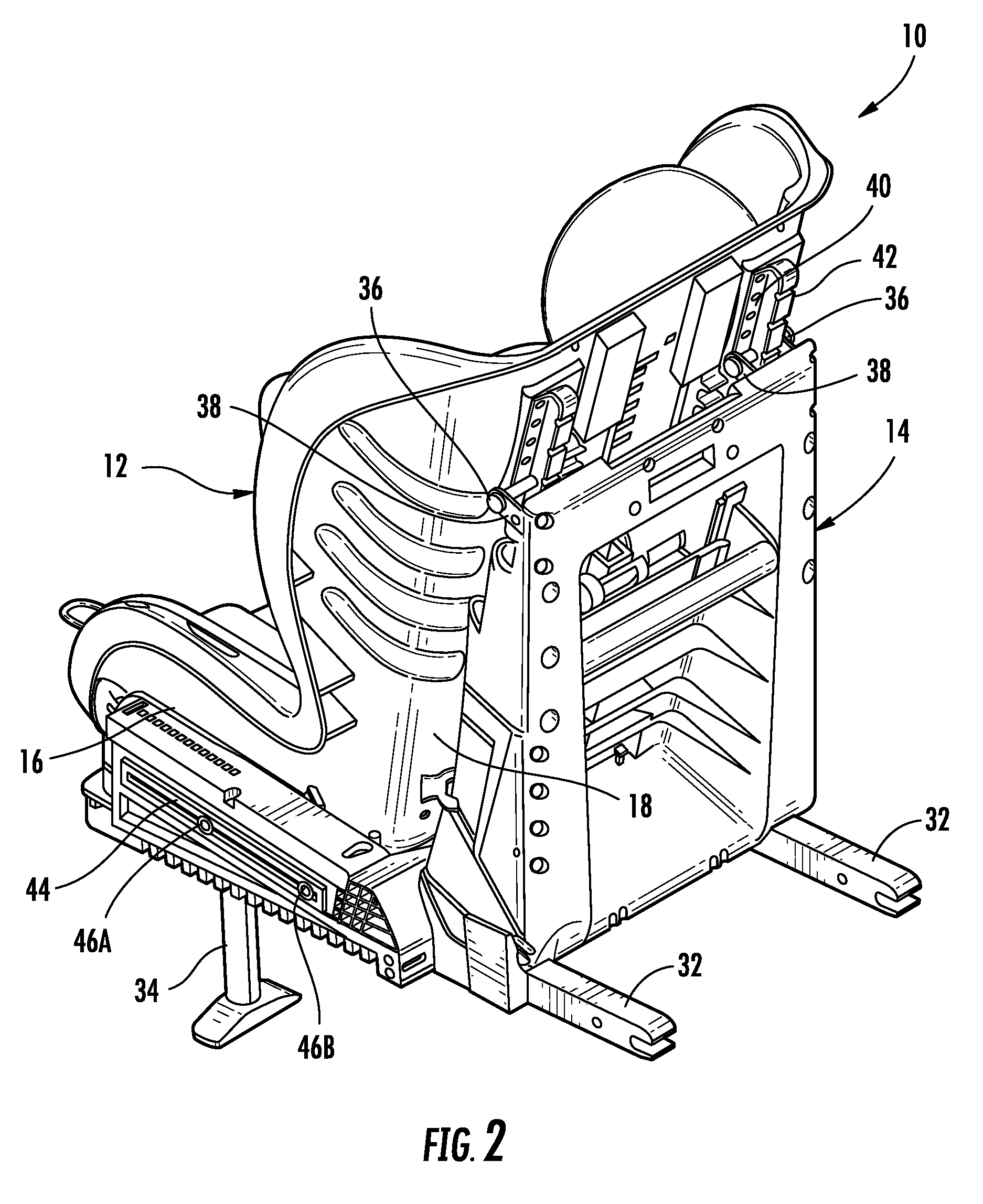Crash indication system for a reclining ride down child seat
a child seat and warning system technology, applied in child seats, pedestrian/occupant safety arrangements, vehicular safety arrangements, etc., can solve the problems of sudden and abrupt movements of children, control of the seat itself, and difficulty in incorporating recline adjustability
- Summary
- Abstract
- Description
- Claims
- Application Information
AI Technical Summary
Benefits of technology
Problems solved by technology
Method used
Image
Examples
Embodiment Construction
[0053]The child safety seat 10 of the present invention uniquely provides both ride down deceleration with recline adjustment of the seat body, generally referred to as 12. Referring first to FIGS. 1-4, the general configuration of the child safety seat 10 of the present invention is shown. More specifically, the child safety seat 10 includes a seat body 12 that is slidably mounted to a base 14. Details of the sliding interconnection thereof will be described in detail below. The seat body 12 includes a seat bottom 16 and a seat back 18, which are preferably integrally formed with each other. Various padding 20 and armrests 22 are preferably provided for added comfort of the child (not shown). The headrest 24 may be adjustable for even further comfort, customization and safety.
[0054]The seat body 12 and base are collectively secured to a vehicle car seat 26. For example, the present invention can be affixed to a vehicle's LATCH system 28. In this example, an ISOFIX type tray 30 may ...
PUM
 Login to View More
Login to View More Abstract
Description
Claims
Application Information
 Login to View More
Login to View More - R&D
- Intellectual Property
- Life Sciences
- Materials
- Tech Scout
- Unparalleled Data Quality
- Higher Quality Content
- 60% Fewer Hallucinations
Browse by: Latest US Patents, China's latest patents, Technical Efficacy Thesaurus, Application Domain, Technology Topic, Popular Technical Reports.
© 2025 PatSnap. All rights reserved.Legal|Privacy policy|Modern Slavery Act Transparency Statement|Sitemap|About US| Contact US: help@patsnap.com



